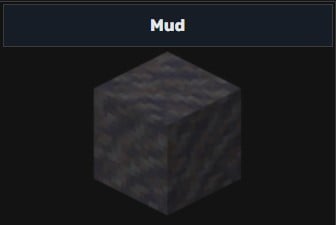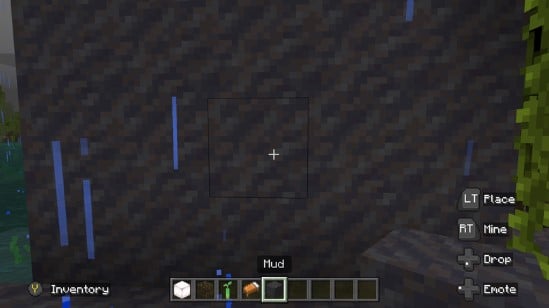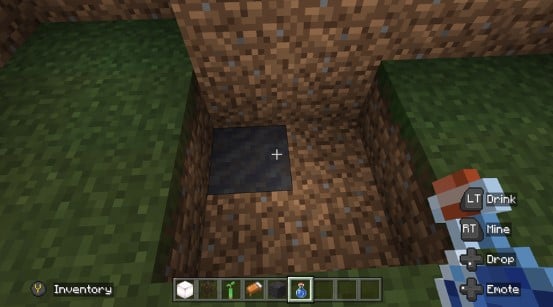How to Make Mud in Minecraft? Recipe & Materials

The Wild Update to Minecraft brought along a plethora of new content for players to enjoy, including new animals, biomes, locations, craftable items, and some new yet interesting blocks to match. Mud is generally used for aesthetic purposes in the game, but it does open up new possibilities for just about any player and is quite easy to create with the right materials.
Mud blocks spawn in the Mangrove Swamp biome, but can be crafted using water and dirt. Players can empty a bottle of water onto a dirt block to create one mud block, or fashion an automated mud-generating system using Redstone machinery.
While getting your hands on mud may seem like a task, it’s actually quite straightforward. Although, players will need to spend some time gathering the right resources and materials. Stick around to find out everything you need to know about mud in Minecraft, including its uses and how you can make it yourself.
Mud Blocks In Minecraft
Mud is just one of the many new blocks added with the recent Wild Update, update 1.19. It was included along with the game’s new mangrove swamp biomes, which may or may not be easy to locate for various players – depending on numerous factors.

These blocks are a natural part of the mangrove swamp biomes, typically generated within these areas – they cannot be found or sourced from any other biome in Minecraft. But, navigating the overworld to find mangrove swamp areas can be somewhat tricky for many players, depending on where the player has spawned in their Minecraft world.
Mud blocks are renewable, can be gathered from their natural biomes using hands or a shovel, and have a blast resistance and hardness rating of 0.5. They are stackable much like all building blocks in the game, as they can be stacked up to 64 per slot.
What Is Mud Used For In Minecraft?
The primary purpose of mud blocks is for decoration, as players can use them for building bases or just to add some detail to their Minecraft home. Mud blocks are not luminant or transparent, but they are definitely handy since they are not flammable and do not catch fire from contact with lava.
But, while these simple and unassuming mud blocks may seem mostly useless, there’s much more to Minecraft’s mud than meets the eye. What makes them more unique compared to other blocks is their expansive uses in many other new blocks, and a special trait of mud blocks is that they are not classified as ‘full blocks’ in Minecraft. According to the Minecraft Wiki:
“Mud is not a full block, and as such, it has some unique properties; entities standing on mud sink slightly into it, similar to soul sand. Unlike soul sand, however, mud does not slow the movement speed of mobs or players that walk on it. Falling blocks such as sand also drop as an item when landing on it, and a hopper that is under a mud block can collect items dropped on top of it.”
At the same time, players can still use mud blocks as full blocks in most cases. Most blocks that can generally be placed on full bocks can also be placed on mud blocks without consequence.
Modified Mud Blocks
Additionally, plain mud blocks form a part of uniquely modified mud blocks, namely Packed Mud and Muddy Mangrove Roots as seen below:

After creating Packed Mud, players can fashion the new Mud Brick block – a dark brown and visually appealing building material that would certainly make for a stunning Minecraft base.

It will take 4 Packed Mud blocks to create 1 Mud Brick block. These blocks can be used to make even more items like Mud Brick Stairs, Mud Brick Walls, and Mud Brick Slabs – meaning players will definitely need a ton of mud for these new materials!

Using mud to eventually craft these uniquely textured blocks opens up a whole new world of possibilities for creative Minecraft players. You’ll be able to design some incredibly fresh and detailed homes and structures, many of which can perfectly match Minecraft’s new biomes.
Clay Blocks
Mud blocks can also be used to create clay, which can be fairly tricky for many players to obtain by other means. Mud will eventually turn into clay if it is placed directly above a block that has pointed dripstone underneath it – best done in dripstone caves.
This allows players to use mud blocks to harvest renewable clay. From this point, players can use the clay to craft clay blocks which can be used to create terracotta, or even smelt down the clay in order to fashion some bricks.
How To Make Mud In Minecraft
While mud blocks can simply be harvested or gathered from mangrove swamp biomes around the Minecraft overworld, many players may find the process perplexing or time-consuming. Not every player is lucky enough to have a Minecraft home near the mangrove swamp areas.

Fortunately, mud blocks are also classified as craftable blocks in the game, meaning players with the right materials will be able to create them on their own. We’ve covered everything you need to know about crafting mud blocks in the comfort of your Minecraft home, with images thanks to IGN.
Mud Recipe & Materials
All players will need to craft mud in Minecraft is as many bottles of water as possible and plenty of dirt blocks. Players will need to combine these materials in order to get mud in Minecraft, and the process can be simple – even effortless!
Water Bottles
Players can gather water in a bottle from just about any water source in the game, whether it be from the ocean, a natural waterfall, or even a small stream. The most challenging aspect of gathering this material is the bottle itself.
Glass bottles can be pretty tough to get your hands on in Minecraft, depending on where your character has spawned or where you’ve decided to set up your Minecraft base. Each glass bottle will take 3 gass blocks and takes some time to craft.
As a result, it may not be a bad idea to set up a miniature base near a beach – simply for the purpose of gathering sand for glass bottles. Doing so can really help players cut down on time overall.
Glass bottles can definitely be reused – so, technically players only need one glass bottle for an infinite number of mud blocks. But, having a bunch of glass bottles ready to go will definitely speed up the process.
Plenty of Dirt
Dirt is by far the easiest resource or material to acquire in the game, as dirt comprises most of the overworld. Players will simply have to mine out the ground, often grass or visible dirt blocks, in order to gather dirt. However, mud can be made with other dirt types as well, such as coarse dirt or rooted dirt blocks.
That being said, players do not necessarily need to gather dirt in order to make mud. Players could simply use dirt blocks as they lay in the ground. Players will mainly need to gather dirt if they want to create a mud generating system, or if they need to create the mud in a different location for some reason.
Considering that players will need one bottle of water per mud block they want to make, players will definitely need to load up on bottles beforehand. Make sure you have a stack of water bottles and multiple full stacks of dirt (or access to dirt) before going ahead with the mud block crafting process.
Mud Crafting Process
The process for creating mud in Minecraft is super simple, provided that players have all the water they need. Players will simply need to place their dirt block down and aim at the block while holding the water bottle in their character’s hand.

Select “Use Item” or right-click while aiming at the dirt, which will automatically add the water to the dirt block. From this point, the dirt bock will naturally convert to a mud block, and the bottle of water will now just be an empty bottle.

Repeat the process multiple times for each mud block you want to create in Minecraft. As a result, crafting a ton of mud blocks in this way can take some time.
Create Mud Blocks Automatically
Alternatively, players can also make use of Restone machinery to create mud blocks. As an example, players can use a dispenser block and load it full of water bottles.
Follow this up by placing a dirt block in front of the dispenser’s output, which will automatically convert the dirt block into a mud block. This way, players will only need to spend time placing down the dirt blocks and gathering the mud blocks after their conversion.
To automate the process even further, players can make use of more nifty items like pressure plates, Redstone clocks, and much more. As long as players do not run out of water bottles or dirt blocks, they can actually create a well-functioning and almost completely automated mud block generator.
Check out the video below, created by ilmango, to get a look at a prime example of a practical and fully automatic mud farm:
That’s all there is to know about getting your hands on mud blocks in Minecraft, as well as what you could use them for in the game. While it will take some time to gather enough water bottles, gathering dirt and creating mud blocks can be super simple and even automatic with the right approaches.

